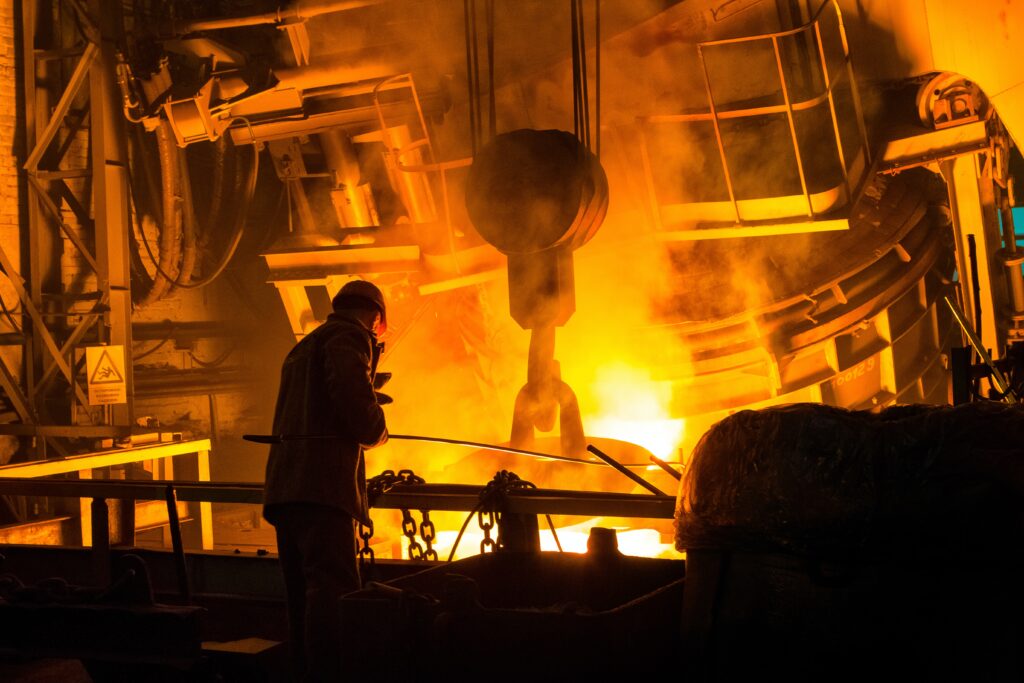In today’s fast-paced and constantly evolving world, technology is playing an increasingly important role in our lives. From smartphones and laptops to smartwatches and fitness trackers, we have become accustomed to using technology to make our lives easier, more efficient, and more convenient. However, the benefits of technology extend far beyond just our personal lives; it can also play a crucial role in improving safety and productivity for workers in hazardous environments. We aim to explore the benefits of wearable technology in hazardous environments and how it can be used to maximize worker safety.

The Progression of Wearable Technology
Wearable technology, also known as “wearables,” refers to any device or equipment that can be worn on the body and is designed to perform a specific function or set of functions. The most common examples of wearable technology include smartwatches, fitness trackers, and smart glasses. Smartwatches, such as the Apple Watch and Samsung Galaxy Watch, allow users to receive notifications, make calls, and track fitness and activity levels. Fitness trackers, like Fitbit and Jawbone, are designed to track a user’s physical activity and provide feedback on sleep, heart rate, and other health metrics. Smart glasses, such as Google Glass and Microsoft Hololens, are equipped with augmented reality technology and can be used for a variety of tasks, including navigation, training, and data visualization.

However, wearable technology has come a long way since its inception. The current capabilities of wearable technology are varied and wide. For example, smartwatches can now track location and monitor vital signs, such as heart rate and blood pressure, making them ideal for use in healthcare settings. They can also be used to detect potential hazards in the environment, such as high levels of carbon monoxide, making them useful for use in industrial and mining environments. Smart glasses can be used for a variety of tasks, including navigation, training, and data visualization, making them ideal for use in manufacturing and construction settings. Additionally, many wearables now include machine learning capabilities, which can be used to analyze data and provide insights that can be used to improve safety and productivity. With the evolution of technology, we can expect wearable technology to become even more advanced and capable in the future.
Wearable Technology Makes Great Strides in Hazardous Workplaces
Wearable technology has the potential to greatly improve safety and productivity for workers in hazardous environments, such as construction sites, factories, and mines. The following are some of the key benefits of using wearable technology in these environments:
- Improved Safety:
- Location Tracking: Wearable devices equipped with GPS can track the location of workers in real time. This can help organizations quickly locate and respond to an emergency.
- Emergency Alerts: Wearable devices can also be used to send emergency alerts in the event of an accident or other crisis, allowing for a faster and more efficient response.
- Real-time monitoring: Wearable devices can be used for real-time monitoring of vital signs and environmental conditions, allowing workers to be quickly evacuated or treated in the event of an emergency.
- Improved Productivity and Efficiency:
- Augmented Reality: Wearable devices equipped with augmented reality technology can provide workers with real-time instructions and guidance, reducing the need for training and minimizing mistakes.
- Real-time monitoring of equipment and resources: Wearable technology can also be used for real-time monitoring of equipment and resources, allowing for more efficient use and reducing downtime.
- Data Analysis: Many wearables now include machine learning capabilities, which can be used to analyze data and provide insights that can be used to improve safety and productivity.

- Improved Communication:
- Wearable technology such as smart glasses can provide workers with a heads-up display that enables them to communicate with other workers and managers in real-time. This can improve productivity and efficiency by reducing the need for face-to-face communication.
- Wearable technology can also improve workers’ comfort, for example, smart glasses it can reduce the need to look down at a device or computer screen which can cause neck or eye strain.
It’s easy to see how wearable technology can greatly improve safety and productivity for workers in treacherous job sites. Additionally, it can also improve communication and workers’ comfort. As technology continues to advance, we can expect to see even more benefits for workers in dangerous working conditions in the future.
Case Studies
Wearable technology has been implemented by various organizations in hazardous environments to improve safety, productivity, and efficiency. There are many case studies published to show real-world examples of companies and organizations that have implemented wearable technology in unsafe workplaces and the positive impact it has had on their operations.
- A mining company in Australia has implemented wearable technology that allows for real-time monitoring of workers’ vital signs, as well as location tracking, this has improved safety and efficiency in the mines as workers can be quickly located and evacuated in case of an emergency.
- A construction company in the United States has implemented wearable technology that provides workers with real-time instructions and guidance, reducing the need for training and minimizing mistakes. This has led to increased productivity and efficiency on the construction site.
- An oil and gas company in the Middle East has implemented wearable technology that allows workers to communicate and access data in real time. This has helped to improve communication and coordination among workers, resulting in increased productivity and efficiency.
- A healthcare facility in the United Kingdom has implemented wearable technology that allows for real-time monitoring of patients’ vital signs and location. This has helped to improve patient safety and care, as well as increase the efficiency of the healthcare facility.
These case studies demonstrate the real-world benefits of wearable technology in hazardous environments, including improved safety, productivity, and efficiency. Additionally, it can also improve communication and workers’ comfort. As technology continues to advance, we can expect to see even more benefits for workers in hazardous environments in the future.
These benefits are being realized by companies and organizations in various industries, including mining, construction, oil and gas, and healthcare. As technology continues to advance, we can expect to see even more benefits for workers in hazardous environments in the future, with wearable technology becoming more advanced, more sophisticated, and more capable.
Citations:
- “How Wearable Technology is Transforming Safety and the Industrial Workplace” (https://ohsonline.com/articles/2022/05/01/how-wearable-technology.aspx)
- “Wearable Technologies for Improved Safety and Health on Construction Sites” (https://blogs.cdc.gov/niosh-science-blog/2019/11/18/wearables-construction/)
- “Using Wearable Technology as a Safety Tool” (https://www.lhsfna.org/using-wearable-technology-as-a-safety-tool/)

